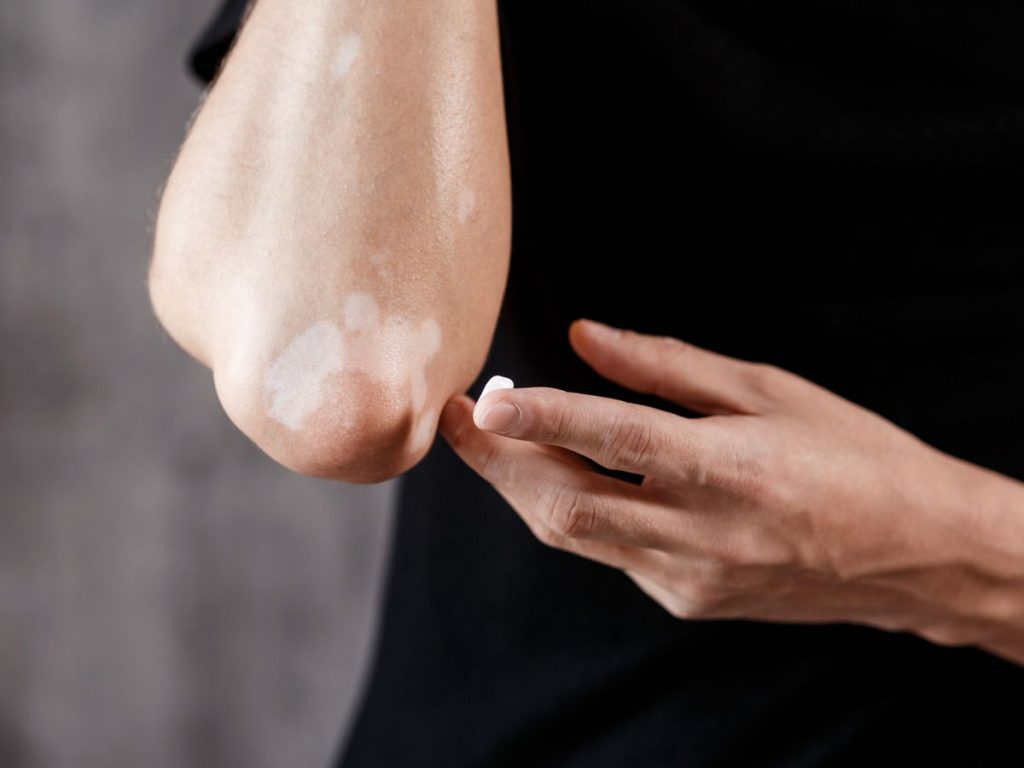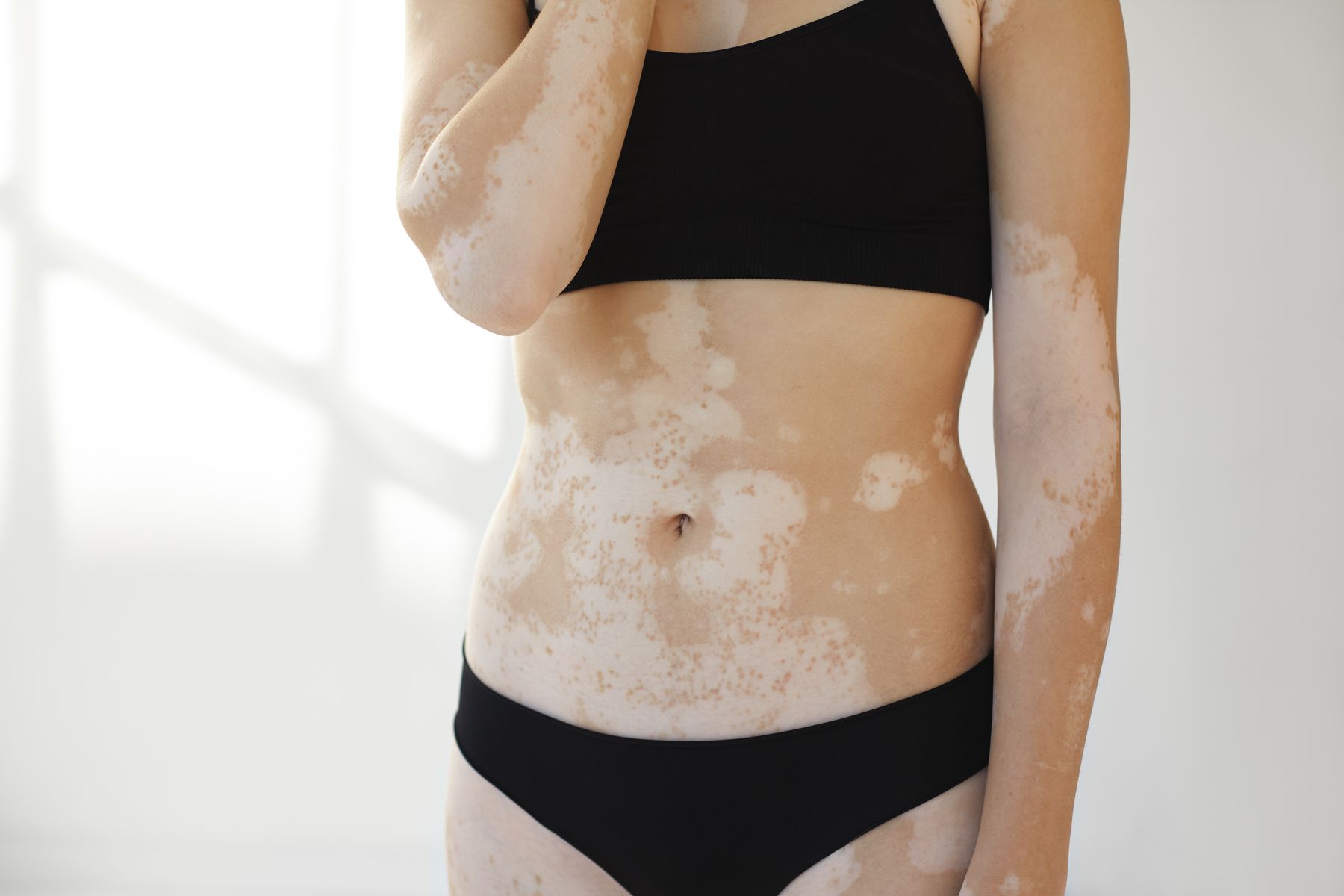What Is Vitiligo?
Vitiligo is a pigmentation disorder that results in white discoloration of the skin. This can appear at any time of life, often causing devastating psychological consequences. It involves males and females equally. While the white lesions are very noticeable, there are no other symptoms associated with the lesions. The psychological consequences of this condition can be devastating for people with darker skin, whose lightened skin due to this condition is very noticeable.

What Causes Vitiligo?
The cause of vitiligo is unknown, but the auto-immune theory of this condition is best supported by current laboratory studies. Vitiligo can be associated with immune disorders such as thyroid disease, diabetes, anemia, and psoriasis. A blood test to check for these disorders can be helpful. Occasionally there can be inflammation in the eye with vitiligo. Any ocular problems should be evaluated by an ophthalmologist.
Other conditions sometimes can be mistaken for vitiligo. The most common are tinea versicolor, a superficial fungal skin infection that causes areas of lightening and often superficial scaliness of the skin. A skin scraping can show fungal elements in the skin.
Treatments and Therapy for Vitiligo
Topical Treatments
Topical treatments are useful in patients with vitiligo, especially with facial and neck involvement.* Short-term treatments with topical corticosteroids are often useful for weeks at a time.* Chronic use of these agents can result in thinning of the skin. Topical Calcineurin inhibitors such as Protopic and Elidel have proven useful in treating this condition over longer periods of time.* Our center pioneered this field, first reporting the utility of Protopic in the treatment of this condition.* Our outcomes suggested that on the head and neck, patients realized a significant degree of re-pigmentation.* The outcomes were clearly better in the summer months with daily sun exposure.* The FDA has issued a warning label about sun exposure in patients receiving these agents, but there is no warning label for the treatment of vitiligo with these agents. However, there are multiple clinical studies in addition to our own that support the efficacy and safety of these drugs.* Some data suggest that topical vitamin-D is also helpful for this condition.*
Phototherapy
Phototherapy has been used for the treatment of vitiligo since the 1800s. UVB, especially 311nm narrowband UVB, appears to be the most efficacious and safe form of treatment.* Our center is a referral practice for ultraviolet light therapy.* The Excimer laser at 308nm has also proved useful in treating vitiligo providing a more pinpoint targeting of the affected areas.* We have broad experience with this device for the treatment of this problem.* Surgical treatment using grafting procedures can be helpful for some patients.* However, this is a difficult and expensive method of treatment.
Schedule OnlineRequest an Appointment in Sacramento, CA
Dr. Tanghetti’s work has been published in journals such as Lasers in Surgery and Medicine, Journal of Dermatologic Surgery, the Journal of Cosmetic and Laser Therapy, and Cutis. He is a fellow of the American Society for Laser Medicine and Surgery, and a member of the California Medical Association, the American Medical Association, and the American Academy of Dermatology. For a consultation to discuss the vitiligo treatments offered at our clinic, call us at [916] 454.5922 or complete the form below.
Schedule Online
"*" indicates required fields


